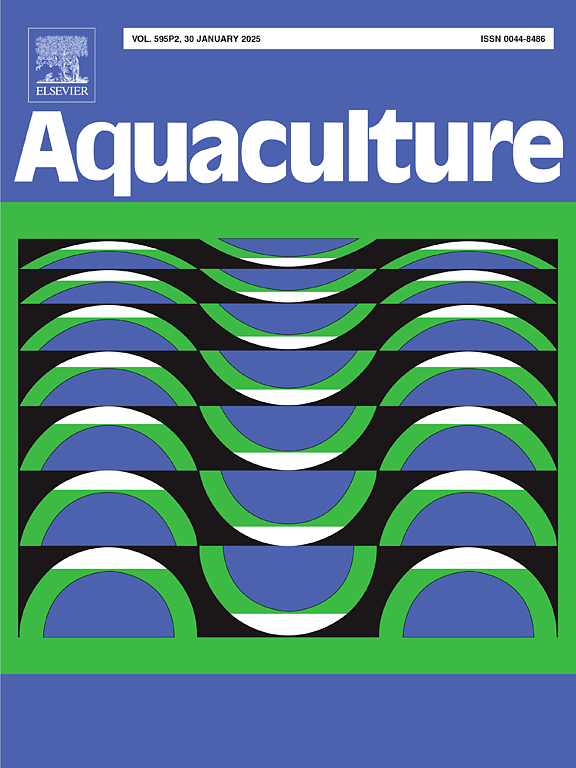Environmental adaptability, virulence, and immune evasion mechanisms of Edwardsiella piscicida in the largemouth bass (Micropterus salmoides)
IF 3.9
1区 农林科学
Q1 FISHERIES
引用次数: 0
Abstract
Edwardsiella piscicida, an emerging fish pathogen, has caused significant economic losses to the aquaculture industry. This study aimed to investigate the biological characteristics, infection process, and environmental impact on the pathogenicity of E. piscicida in the largemouth bass (Micropterus salmoides). E. piscicida strain FSMS2108 was isolated from infected largemouth bass and identified through molecular and phenotypic analyses. Strain FSMS2108 exhibited growth at pH 5–9 and salinity at 5–30 ppt, with optimal growth at neutral pH and low salinity. It carried nine virulence genes and exhibited phospholipase activity. An immersion infection model revealed that strain FSMS2108 could infect largemouth bass through mucosal surfaces, leading to high mortality. Environmental factors, including water temperature and dissolved oxygen content, significantly affect the cumulative mortality rate of largemouth bass infected with strain FSMS2108. Bacterial load and histopathological analyses showed that strain FSMS2108 primarily colonized the gills, skin, and spleen, spreading systemically via the bloodstream and causing widespread tissue damage. Transmission electron microscopy revealed that strain FSMS2108 proliferated within splenic macrophages. Gene expression analysis indicated that strain FSMS2108 interfered with host immune responses and inhibited apoptosis, primarily through upregulation of anti-apoptosis genes and downregulation of pro-apoptosis genes. These findings provide insights into the infection mechanism and environmental adaptability of strain FSMS2108 in the largemouth bass, highlighting the importance of environmental management for disease prevention and control.
求助全文
约1分钟内获得全文
求助全文
来源期刊

Aquaculture
农林科学-海洋与淡水生物学
CiteScore
8.60
自引率
17.80%
发文量
1246
审稿时长
56 days
期刊介绍:
Aquaculture is an international journal for the exploration, improvement and management of all freshwater and marine food resources. It publishes novel and innovative research of world-wide interest on farming of aquatic organisms, which includes finfish, mollusks, crustaceans and aquatic plants for human consumption. Research on ornamentals is not a focus of the Journal. Aquaculture only publishes papers with a clear relevance to improving aquaculture practices or a potential application.
 求助内容:
求助内容: 应助结果提醒方式:
应助结果提醒方式:


